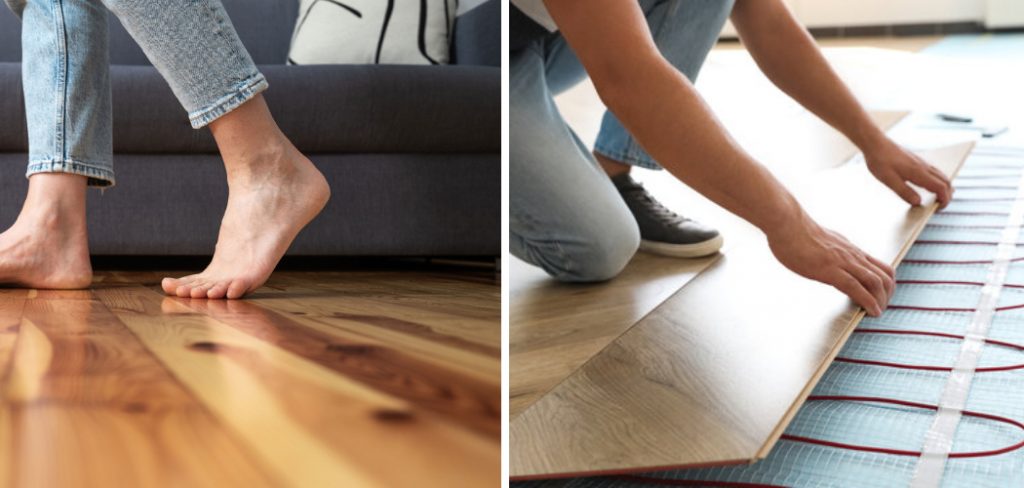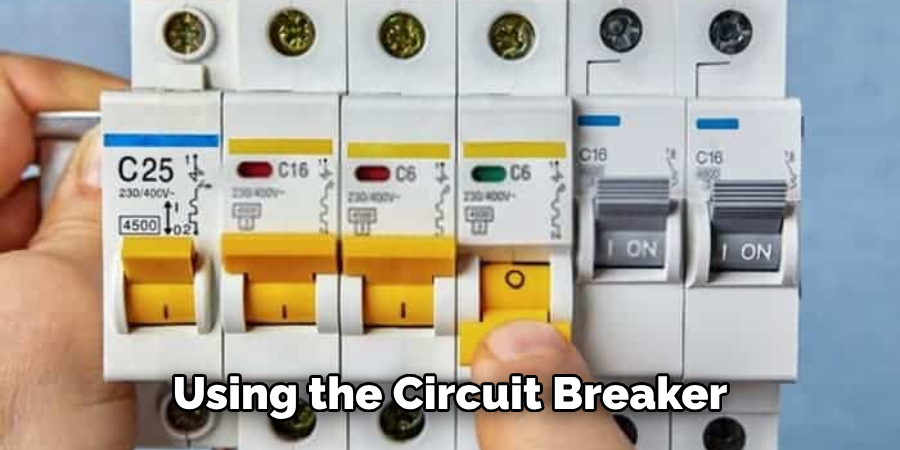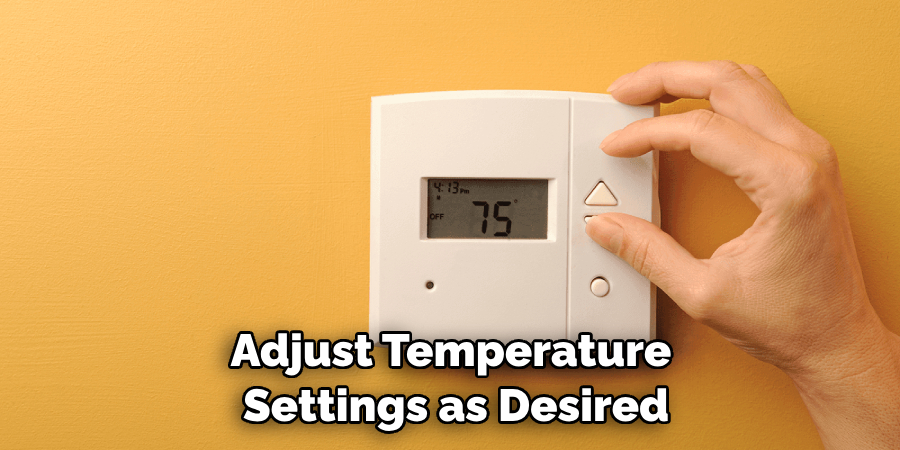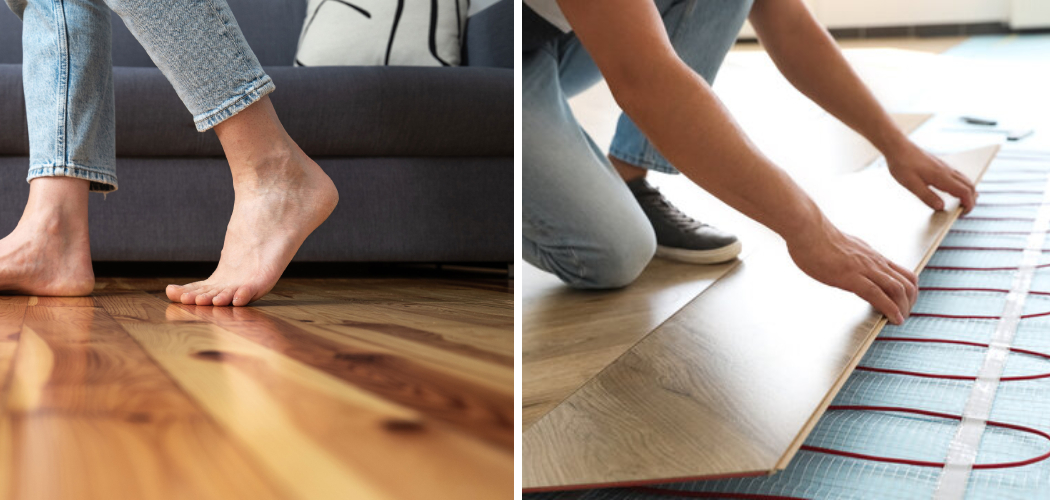Homeowners looking to increase comfort levels and reduce energy costs increasingly turn to floor heating as a great way to do both. But far too often, people assume that turning on floor heating is an overly complicated process or one requiring the help of expensive technicians.

In reality, turning on your home’s floor heating system is relatively simple and can easily be completed by following this helpful guide on how to turn on floor heating! Learn how to safely activate your underfloor heating in no time from the comfort of your own home.
What is Floor Heating?
Floor heating, also known as underfloor heating or radiant floor heating, is an energy-efficient and cost-effective way of providing warmth and comfort in your home. It works by circulating warm water through pipes installed beneath the floorboards, radiating heat up into the room. This process eliminates cold spots from conventional central air systems while cutting down on energy costs associated with heating a home.
Needed Tools
Given below are the tools you may require to properly turn on floor heating in your home:
- Circuit Breaker
- Screwdriver
- Gloves
- Voltage Tester
- Pipe Wrench
11 Step-by-step Guidelines on How to Turn on Floor Heating
Step 1: Shut Off the Power Supply
Using the circuit breaker, shut off all of the electricity to your home prior to beginning any work in order to avoid shock. Double check that your voltage tester confirms the power has been completely shut off before proceeding any further with the process.
It is also a good idea to put on rubber gloves to protect your hands. It is important to make sure you have shut off all electrical sources before beginning any work. But, if you’re not sure about the procedure of turning off the power supply to your home, then it’s best to call an electrician.

Step 2: Locate and Access the Control Panel
The control panel is found somewhere near where the floor heating system is installed in your home, so look around or consult an owner’s manual to find the exact location. Once you’ve located it, use a screwdriver to open up the control panel and expose its inner workings. This will give you access to the system’s wires and other components. It is important to make sure that the panel remains accessible for future maintenance.
Step 3: Inspect All of the Wires and Pipes
Carefully inspect all of the wires and pipes connected to your floor heating system for any visible damage or corrosion. If you see any issues, contact a qualified technician right away to properly repair or replace the affected components.
It is important to ensure all parts are properly wired and secured in order for the system to safely operate. If everything looks okay, you can proceed to the next step. But, if you feel uncomfortable with the wiring or any other part of the system, then it’s best to contact a professional.
Step 4: Put on Your Gloves
Before touching any of the wires, pipes, or other components in the control panel, make sure you’re wearing a pair of protective gloves as a safety precaution. It is always better to be safe than sorry, so make sure you put them on before proceeding. This will protect you from potential shocks that may occur due to contact with any live wires.
If you don’t have a pair of gloves handy, be sure to get some at your local hardware store before attempting to turn on the floor heating system. But, if you are not comfortable with this procedure, then it’s best to contact an electrician.

Step 5: Check to Make Sure All Wires are Connected Properly
Ensure that all wires are securely connected and undamaged before turning on your floor heating system. Double check for loose connections, frayed wires, and corrosion as well. It is important to make sure that all wires are correctly connected before attempting to turn on the floor heating system.
If you’re unsure or uncomfortable about any of the wiring, then it’s best to contact a qualified electrician before proceeding. This will ensure that you don’t accidentally cause any damage to the system or put yourself at risk of electric shock.
Step 6: Turn On the Power Supply
Once you have verified that all of the components in the control panel are correctly installed and secured, turn on the power supply at the circuit breaker. It is important to make sure that you turn the power back on slowly because sudden surges of electricity can damage your floor heating system.
But, if you’re not comfortable with this process then it’s best to contact an electrician. It is always better to be safe than sorry.
Step 7: Activate the Floor Heating System
Locate the main switch on your control panel and turn it to the “On” position. This will activate your home’s floor heating system. If you feel uncomfortable performing this step, then it’s best to contact a professional electrician.

However, if everything appears to be correctly installed and the power is back on, then you should not have any problems. It is important to make sure that the main switch is in the “On” position before attempting to turn on your floor heating system. But, if you feel uncomfortable with this process then it’s best to contact an electrician.
Step 8: Test for Leaks
Make sure that all of the pipes connected to your floor heating system are properly sealed by running a pressure test. If you find any leaks or damage, contact a qualified technician immediately to address the issue before turning on your floor heating again. If everything checks out okay, you can proceed to the next step.
It is important to make sure that all of the pipes connected to your floor heating system are properly sealed before turning it back on. But, if you’re not comfortable performing this process then it’s best to contact a professional electrician
Step 9: Adjust Temperature Settings as Needed
Using either a digital display or analog dials located in the control panel, adjust temperature settings as desired in order to get an optimal level of comfort in your home. It is important to make sure that the temperature settings are correctly adjusted in order for the system to function properly.
But, if you’re not comfortable performing this process then it’s best to contact an electrician. You should also check to make sure that the floor heating system is set to turn on and off at designated times in order to conserve energy.

Step 10: Turn On the Individual Zone Valves
Once you’ve set the desired temperature, it’s time to turn on the individual zone valves for each room of your house. This will ensure that heat is evenly distributed throughout your entire home.
It is important to make sure that each zone valve is correctly turned on in order for the system to properly function. But, if you’re not comfortable performing this process then it’s best to contact an electrician. This will help to ensure that your floor heating system is running efficiently and safely.
Step 11: Monitor and Adjust as Needed
As a final step, monitor the system periodically to make sure everything is running smoothly and adjust settings as needed in order to achieve optimal results. Always use caution and contact a qualified technician if you come across any issues or have any questions.
It is important to maintain and monitor your floor heating system to ensure that it is functioning safely and efficiently. But, if you’re not comfortable with this process then it’s best to contact an electrician. This will help you to get the most out of your system and keep it running properly for years to come.
By following these simple steps on how to turn on floor heating, you can now safely turn on your floor heating system from the comfort of your own home! Enjoy all of the benefits of energy efficiency combined with maximum warmth and comfort this winter season. For any further questions or concerns, contact a qualified technician for additional help.
Frequently Asked Questions
Q: How Often Should I Check My Floor Heating System?
A: We recommend checking the system at least once every two weeks to ensure that all components are functioning properly. Additionally, we suggest having a qualified technician inspect your system at least once a year to address any potential issues before they become more serious.
Q: How Can I Maximize My Energy Efficiency?
A: In order to maximize energy efficiency while using your floor heating system, make sure to keep thermostat settings as low as possible and only heat the rooms in your home that you need heated. Also, consider investing in an advanced control system such as a smart thermostat to further increase efficiency levels.

Q: Is Floor Heating Safe to Use?
A: Yes – when installed by a licensed professional and maintained regularly, floor heating systems are safe and completely free from fire hazards or other risks. Make sure to follow all safety precautions outlined in this guide when turning on your floor heating system.
Q: What Types of Floor Coverings are Compatible with Floor Heating?
A: Most types of floors can be heated, including carpet, wood, laminate, vinyl, and ceramic tiles. However, it is important to note that some materials may not be compatible with radiant floor heating systems due to their thickness or heat-retaining properties. Consult with a qualified technician before installing any type of floor covering over your floor heating system for the best results.
Conclusion
With a few simple steps, you now have all the information you need to turn on your floor heating. Whether you are taking your first steps toward installing the heating or are looking for information on how to operate it, this article has provided helpful instructions.
As we now know, turning on floor heating requires follow-up maintenance and an understanding of furnace ventilation as well as considerations in terms of budget and environment.
Consider adding content that speaks about other aspects of this process such as safety measures or even potential risks if the rules are not respected. In any case, these points are integral to making sure your floor heating system remains safe and efficient through all seasons!
Now that you know how to turn on floor heating, why not give it a try? Use your newfound knowledge wisely and remember to consult a professional when necessary for help with installation or operational issues.
